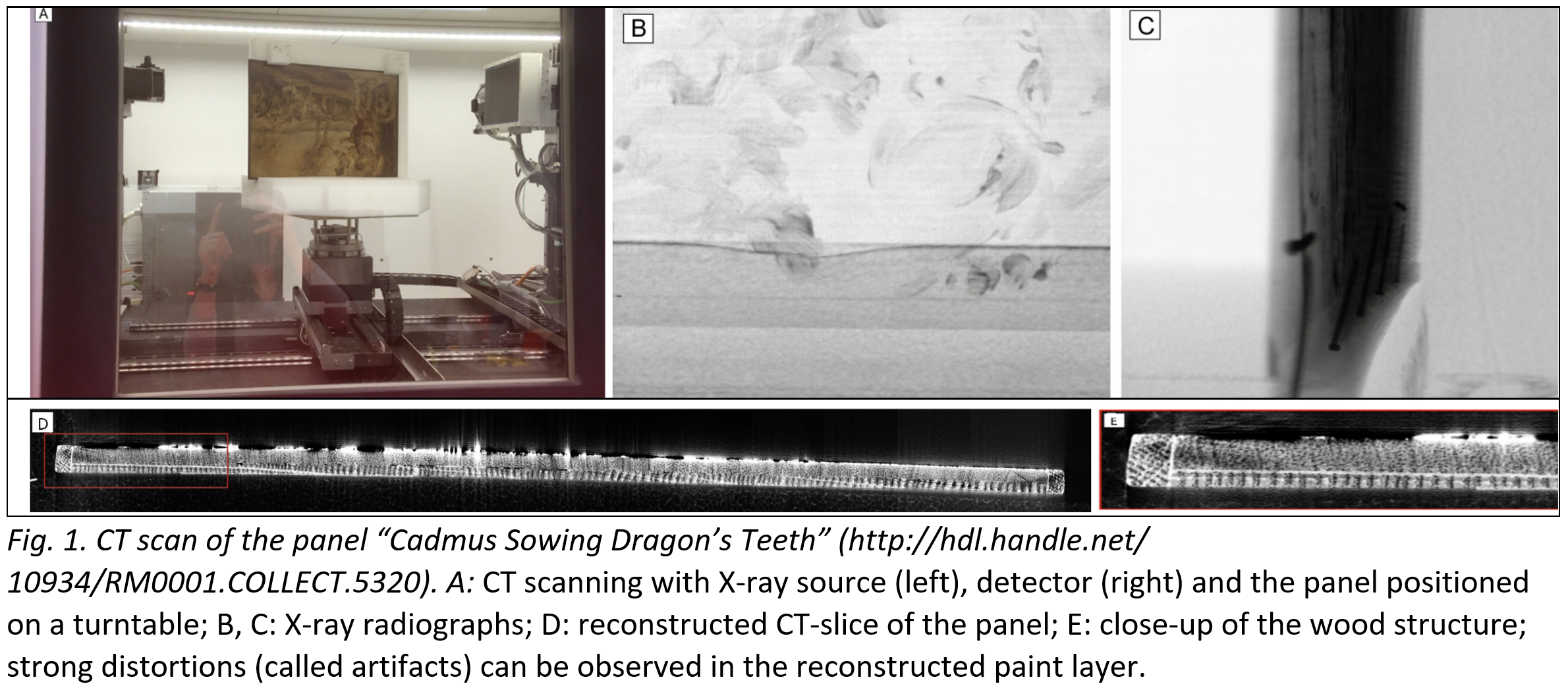CATEGORY
Paintings
START
2024
STATUS
Active
ACRONYM
FLEXART
Historical paintings have been extensively researched for their preservation and understanding of their creation processes. These paintings typically comprise layers like support, ground, paint, and varnish. Various materials, including canvas, wood, and paper, serve as supports, and the paint layers are often semi-transparent.
The layers beneath the surface of a painting can reveal critical information about the artist’s techniques and creative process. The effects achieved in paintings, such as translucent textures or realistic shadows, often depend on how these layers interact. Understanding of the different layers is also crucial for addressing conservation issues like paint discoloration or delamination, leading to changes in the paint layers over time.
Whereas most imaging techniques mainly probe the surface of objects, or provide only 2D projections including information about the different underlying layers, X-ray Computed Tomography (CT) is a powerful technique for non-invasive imaging of the 3D interior of objects based on X-ray transmission through the object. Originally designed for medical purposes, CT methods have found their way into a broad range of other application fields, including cultural heritage.
The objective of the FLEXART project is to develop versatile 3D X-ray imaging tools for both technical art history and conservation diagnostics that enable low-radiation imaging of paint layers. Most larger museums already have invested in a variety of 2D “planar” X-ray imaging options (also called radiography), which are straightforward to use and suitable for a wide range of collection objects. We will make these advanced imaging techniques accessible at the Ateliergebouw of the Rijksmuseum, at the high-resolution micro-CT facilities at University of Antwerp and CWI Amsterdam, and also to the Fitzwilliam Museum (Cambridge, UK) and other national and international museums . To achieve this, we plan to: (i) devise specialized acquisition and reconstruction strategies specifically suited to the varied and layered nature of paintings, (ii) develop advanced algorithms and open source software for 3D image reconstruction of paint layers from limited data; (iii) collaborate with art historians and conservators to apply these techniques to selected paintings from the museum collections.
